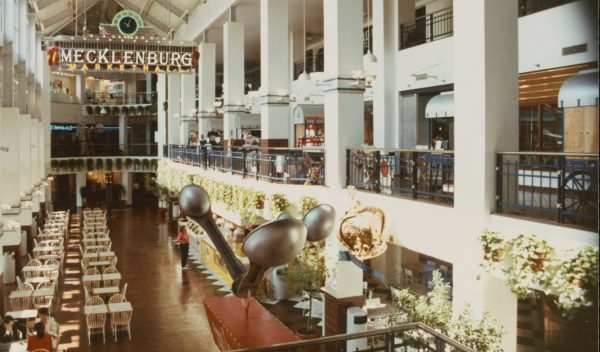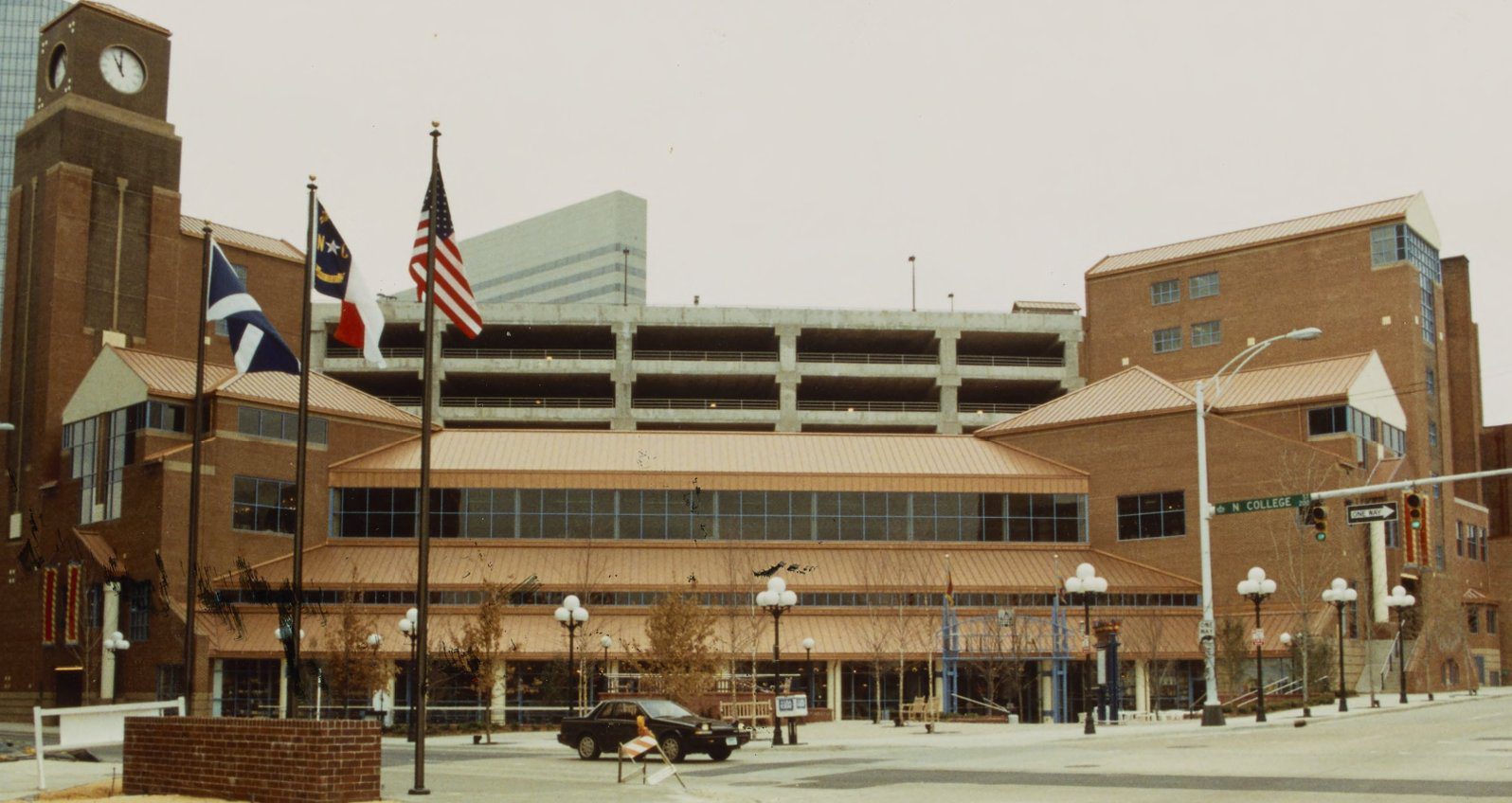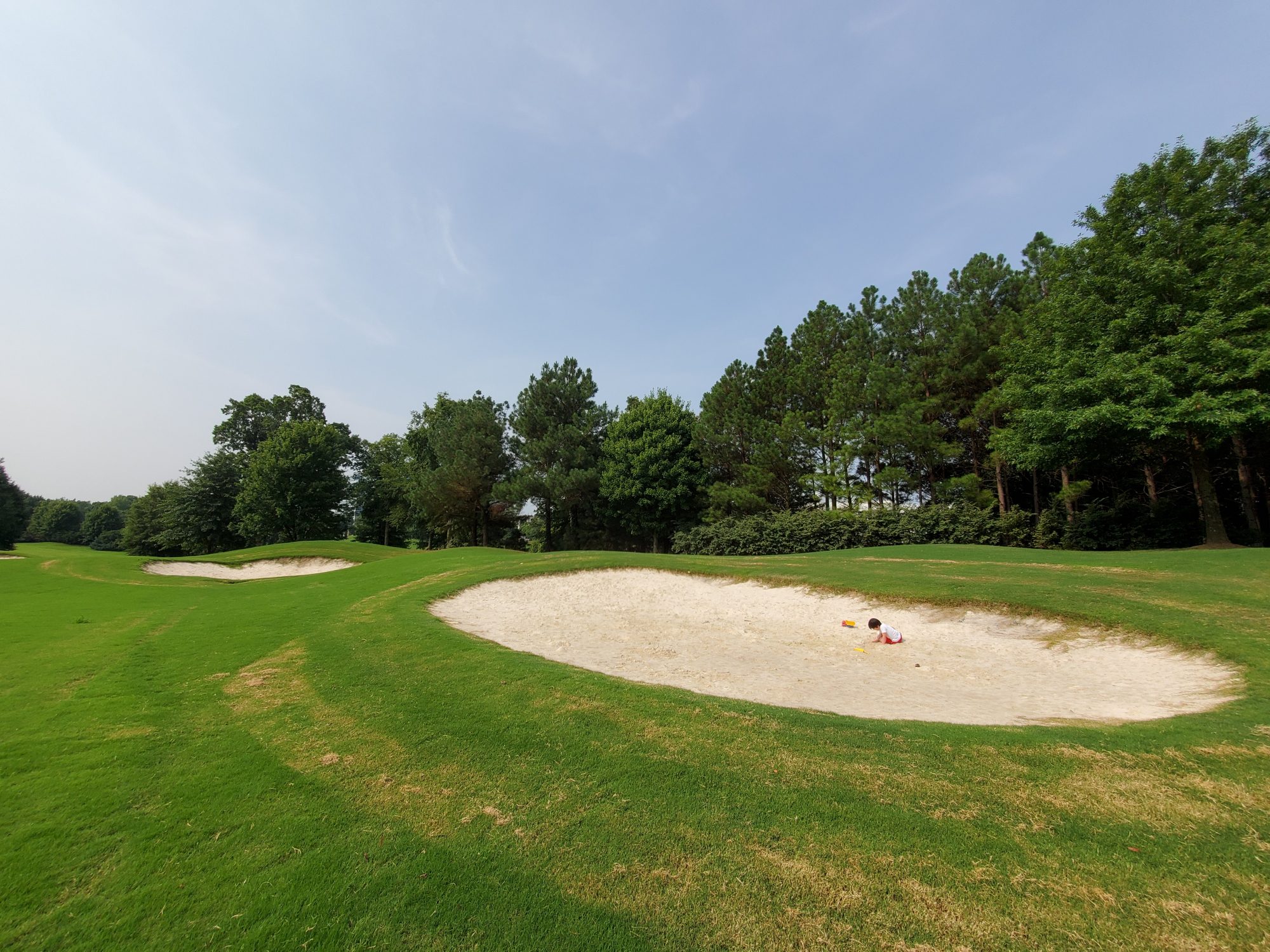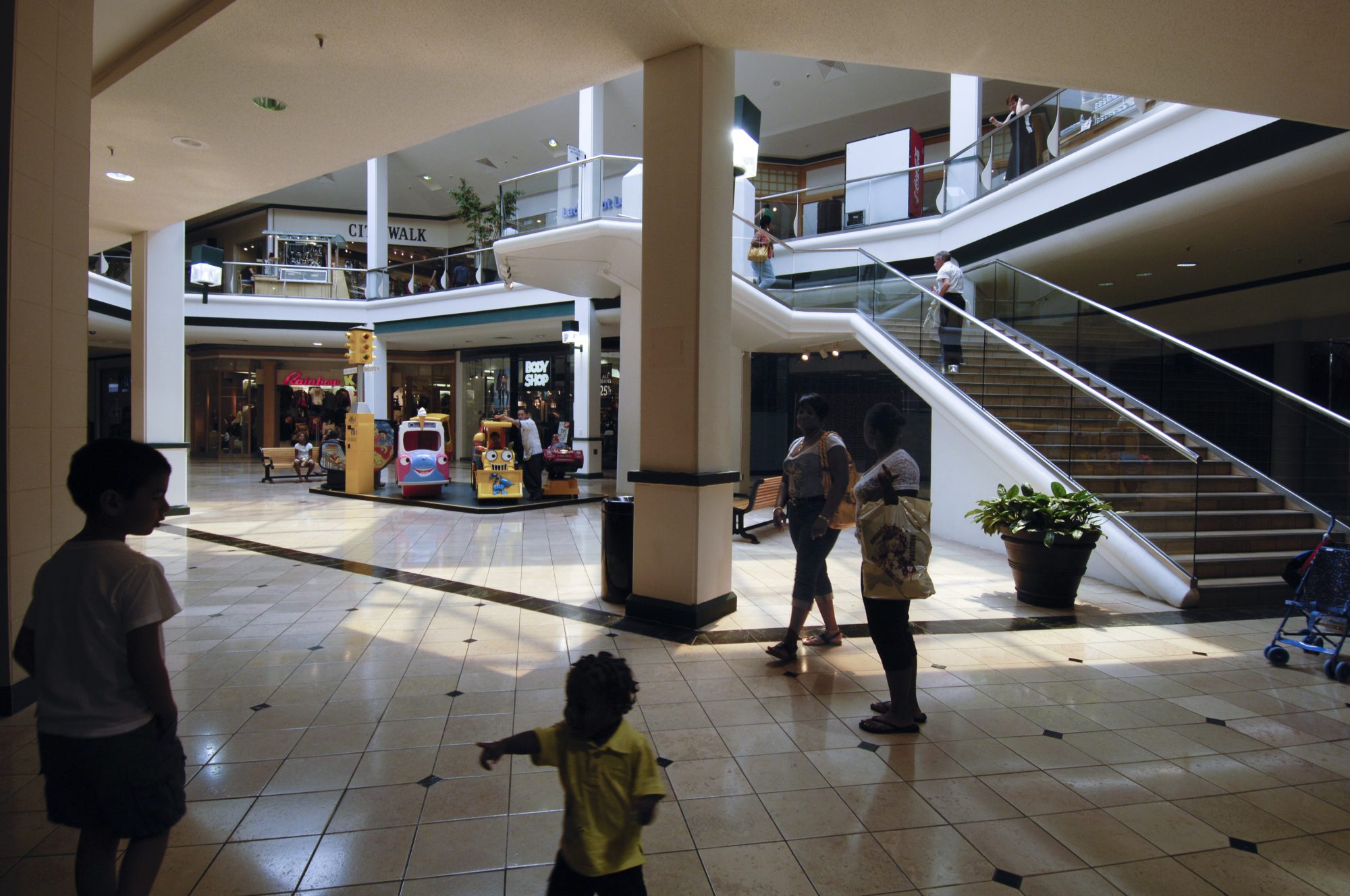Here and gone: When major buildings don’t even make it to middle age

Charlotte is a city that’s often criticized for tearing down its history. But some of the most significant demolitions of the past few decades haven’t been historic structures, but rather buildings that didn’t make it to middle age — or even puberty.
In a fast-growing city, plenty of change is to be expected. The built environment doesn’t stand still anywhere, and Charlotte is good at clearing out the old to make way for the new: Smaller ranch houses are torn down for Arts and Crafts-style “bungalows,” forests give way to interchanges and office parks, farmland morphs into shopping malls. Still, despite the here today, gone tomorrow quality parts of Charlotte embody, there’s a certain permanence we instinctively associate with major structures. And it can be disorienting when they’re erected and erased in a generation or less.
On this day 45 years ago, Eastland Mall opened to the public with a grand opening ceremony held on its ice skating rink. The mall would become a social destination for generations of young people and still has a special place in the hearts of many Charlotteans. #Clt #CltHistory pic.twitter.com/Hpt2oc2r0i
— Special Collections (@unccspeccoll) July 30, 2021
Inspired by the above reminder and a recent trip to the former Ballantyne Golf Course — now a serene park of walking trails, catch-and-release fishing and giant sandboxes — I decided to take a look at major Charlotte structures that opened to fanfare, had their day in the sun and blinked out of existence before they could even have a shot at qualifying for historic status (which generally means at least 50 years old). These include the city’s former premier mall, its first major league sports team’s arena, a golf course that once anchored a new vision of the suburbs and a misbegotten mall that was supposed to help save the city’s center. These past demolitions also hint at what changes we might expect to see in the near future.
First, though, a brief digression: What does it mean when significant structures are torn down so quickly? I’m not trying to suggest they should have been saved, or that nothing “better” will spring up in their place. For all the nostalgia, Eastland was an enclosed mall in terminal decline when it closed, an early casualty in a society that built too much duplicative shopping space and was blindsided by the era of online retail. And CityFair, the former uptown mall, inspires more jokes than nostalgia.
What we lose is still a question worth pondering, however. In addition to the disorientation that comes with such quick changes, we also miss out on the chance to see old buildings reborn. There’s no way to know which decrepit manufacturing facility might be the next Optimist Hall in 50 years, or whether an old factory and warehousing site could be the future Camp North End. Of course, repurposing an NBA stadium or a food hall attached to a parking deck isn’t the same as an adaptive reuse project at a historic mill right next to the city’s center. Still, the possibilities beyond simple demolition and replacement make for an intriguing game of “what-if?”
Here’s a look at four once-promising, (mostly) once-popular Charlotte places that didn’t stand the test of time, as well as what replaced them and which similar places could be demolished next:
CityFair
What it was: An enclosed “festival marketplace” mall in uptown Charlotte, at Sixth and College streets. “Joint venture partners Carley Capital Group and the city of Charlotte are counting on the nearly 60 shops, food places and pushcarts to draw visitors and suburbanites to the center city,” the Charlotte Observer noted at the grand opening.
How long it lasted: Not even long enough to be a teenager. CityFair opened in 1988, closed briefly in the early 1990s, reopened, then was imploded for good in 1998. As CharlotteFive put it: “Nobody ever really went there because (a) It didn’t have street-level stores (2) Hardly anybody lived in uptown back then (3) It had no major tenants.”

CityFair partially screened a parking deck at Sixth and College streets. Photo: J. Murrey Atkins Library special collections
What’s there now: The Hearst Tower.
Which similar spaces are at risk: The EpiCentre (which itself replaced the original Charlotte Convention Center, 32 years old at the time of its implosion) is following an eerily similar trajectory. Built two decades later as a partially enclosed, internal-walkway-based, off-street entertainment zone, the EpiCentre opened in 2008, went through bankruptcy in 2012, and is now facing foreclosure after bleeding tenants and customers for years. Charlotte Mayor Vi Lyles recently said “open space” could be a good use for the site (ie, no more EpiCentre).
Charlotte Coliseum
What it was: The Charlotte Hornets’ first home, on Tyvola Road. The arena seated just over 24,000 fans.
How long it lasted: Long enough to buy cigarettes but not a beer. The Charlotte Coliseum opened in 1988 and was imploded 19 years later in 2007.
What’s there now: The site was scraped clean for a residential development that stalled in the aftermath of the Great Recession. Construction has since resumed, and much of the former Coliseum’s footprint is now occupied by houses and apartments.
Which similar spaces are at risk: Bank of America Stadium, which opened in 1996, is likely to be demolished and rebuilt sometime in the next decade. Carolina Panthers owner David Tepper has said he wants a new stadium built in part with public financing, and Charlotte leaders say the site could anchor a new uptown entertainment district.
Ballantyne Golf Course
What it was: The golf course at the Ballantyne Hotel & Lodge and corporate park of the same name, the golf course was one of the centerpieces of the massive, 1990s-style office park-and-suburbs development built on open land at a new interstate interchange on I-485.
How long it lasted: Just long enough to have its first legal drink. Ballantyne opened in 1998 and closed at the end of 2020, giving it a 22-year run.

Ballantyne’s former golf course, where sand traps are now sandboxes. Photo: Ely Portillo
What’s there now: New owner Northwood Office plans to extensively redevelop Ballantyne Corporate Park, replacing the golf course and oceans of surface parking with thousands of housing units, retail space, restaurants and public spaces like an amphitheater. For now, the former golf course is open to the public as a park called Ballantyne’s Backyard, laced with walking trails, catch-and-release fishing in old water hazards, and programming like live music and yoga.
Which similar spaces are at risk: Ballantyne isn’t the first local golf course to be redeveloped — Rea Farms in far southeast Charlotte is another example of a golf course turned into a new mixed-use development, for example. Other golf courses could well follow, as the sport continues to draw a lower number of players than its early-2000s peak popularity.
Eastland Mall
What it was: Charlotte’s third modern, enclosed shopping mall, Eastland followed SouthPark’s successful opening in 1970 and the earlier Charlottetown Mall. For a long time, Eastland was the place to be, with an indoor ice skating rink and popular food court.
How long it lasted: The granddaddy on this list, Eastland opened in 1975 and was demolished in 2013, meaning it was in existence for 38 years.

Eastland Mall in 2009. Photo: Nancy Pierce
What’s there now: The 80-acre east Charlotte site has been largely unoccupied since the demolition, but plans for a major mixed-use development that will include a major league soccer facility, retail, restaurants and residences are slowly moving forward.
Which similar spaces are at risk: Northlake Mall — Charlotte’s youngest, at just 16 years old — is facing possible foreclosure proceedings after its owner reportedly failed to make debt payments. Pineville’s Carolina Place Mall, which opened 30 years ago, has also struggled to retain anchor tenants.